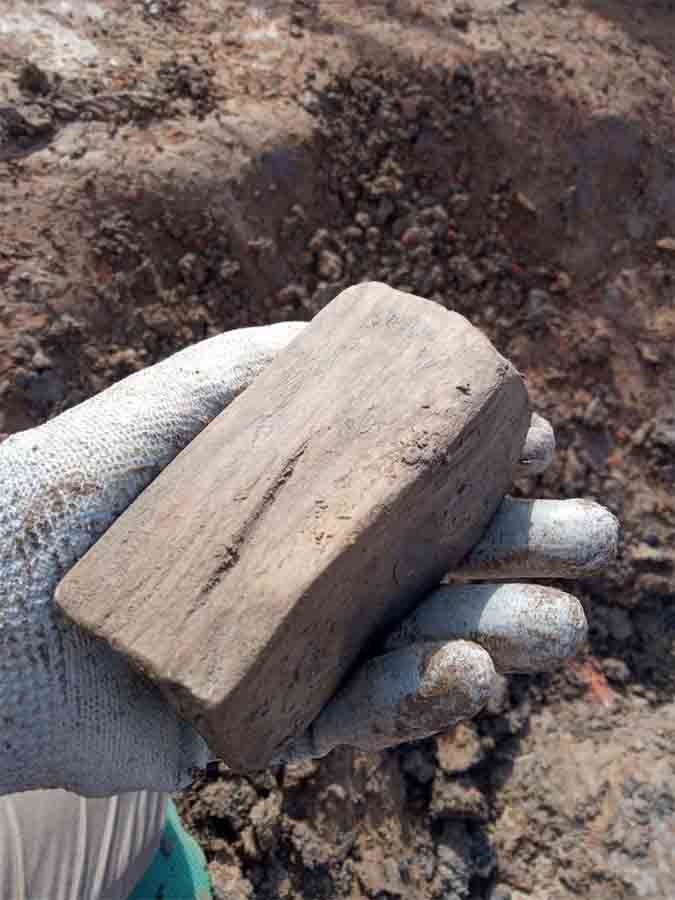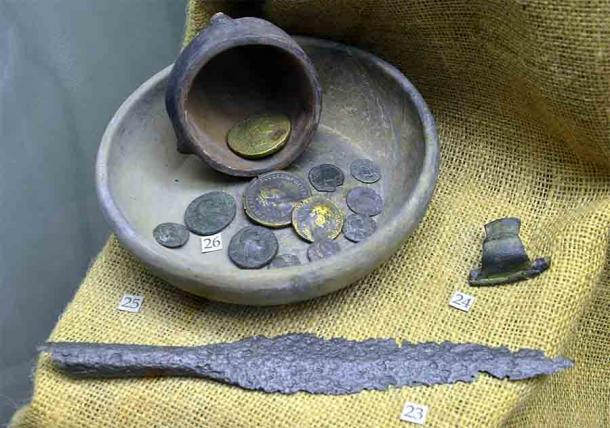A massive archaeological site in Wrzępia, a tiny village in southern Poland, has been discovered by a team of Polish archaeologists from the Institute of Archaeology, Jagellonian University, Krakow. The study, called “%20
In an interview on %20

The stone tool that was recently discovered at the ancient Polish pottery kiln site. ( Science in Poland )
Polish Pottery Kiln Mega-site Approach and Artifacts
In the same interview, Bulas stated, “Our research shows that only storage vessels with characteristic thickened necks were produced there. These were large vessels up to 50 cm neck diameter and about 70 cm high. The vessels were most likely used for storage – for example of food. There are known discoveries of such vessels dug into the ground, which probably served as %20
The team used something called a %20
As of now, the remains of only two kiln sites have been investigated. The team also collected a lot of interesting material in the form of pottery fragments, a stone tool, and samples of %20

Prehistoric earthenware from the Polish Lusatian culture (early Iron Age), part of an exhibit at Sułkowski Castle in Bielsko-Biała, Poland. (Lestath / CC BY-SA 3.0 )
Ancient Polish Background: The Vandals and Przeworsk Culture
Between the 3 rd and 5 th century AD, a Germanic tribe known as the %20
The Vandals were particularly despised because they were fierce fighters, who were renowned and feared for their looting and sacking abilities.
The Vandals are also closely associated with the %20
<iframe width=”560″ height=”315″ src=”%20
The other distinctive feature of the Przeworsk culture is its pottery and metalwork. This is affirmed by Bulas, who notes that “.. the largest previously known site with pottery kilns of the Przeworsk culture is located in Zofipol near Kraków, where about 57 kilns have been found during excavations and geophysical research.”

Przeworsk culture metal artifacts suggest these people weren’t barbarians at all! (Silar / CC BY-SA 3.0 )
Advanced Pottery and Metallurgy by Barbarians?
The developed nature of both the pottery and metallurgy in the Przeworsk culture is astounding, and one marvels at the Roman propaganda machine that called these people barbarians.
Large iron production centers, the biggest anywhere in Europe from that period, were located in the %20
The Polish archaeological team plans to return to the site next year and carry out further research. They are primarily interested in answering two academic questions:
- Were the kilns used over many centuries as a flourishing production center or only over a short period of time?
- If production was carried out on such a large scale, were there any established trading partners or trade routes?
For aspiring historians and archaeologists, and those with a curious bent of mind, the research team created a short documentary clip about their method and findings (see link above). They have also documented their day-to-day progress and everyday findings on their %20
Top image: An advanced piece of ancient Polish pottery that was made by people who the Romans viewed as backward barbarians. Obviously, these people were anything but barbaric! Source: Science in Poland
By Rudra Bhushan
 RSS Feed
RSS Feed















 April 14th, 2021
April 14th, 2021  Awake Goy
Awake Goy  Posted in
Posted in  Tags:
Tags: 













